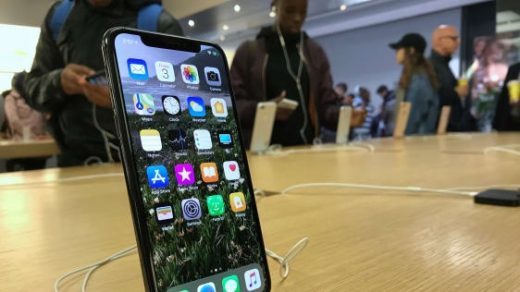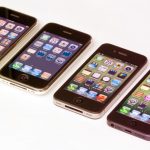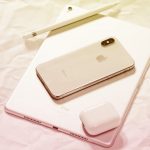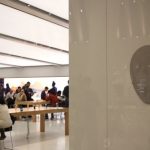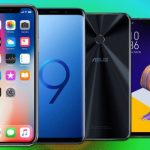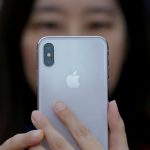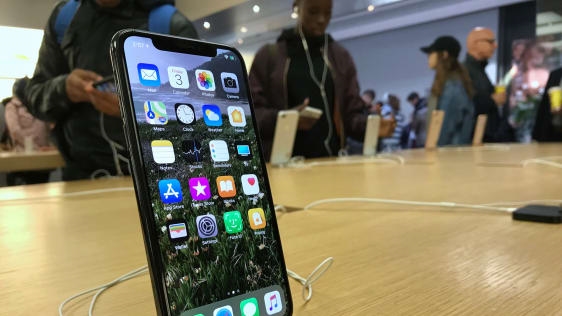Apple Bet That We’d Pay More For Phones. It Was Right
The initial reports of Apple’s earnings Thursday said the company had a record quarter, but that iPhone sales fell from the year-earlier quarter.
But there was a big caveat to the numbers: Apple said its quarterly report reflected only 13 weeks of iPhone sales, compared to the 14 reported in the year-ago quarter. Apple said that if you look at the weekly average, the company actually did more iPhone business in this year’s holiday quarter.
If that’s true, Thursday’s earnings report begins to look much closer to an unconditional home run.
But however you want to parse those numbers, the bigger point is how much money Apple is making on every device. Even without correcting for the missing week of sales, Apple brought in far more revenue from iPhone sales this holiday quarter ($61.5 billion) than it did last year ($54.4 billion).
And the stunner is the Average Sale Price (ASP) for the iPhone, which grew from $695 last holiday quarter to $796 this holiday quarter. What happened? The introduction of the iPhone X, which starts at $1,000, and the iPhone 8 Plus, which starts at $800. The dramatic rise in that ASP numbers suggests that a large part of the holiday iPhone sales came from sales of those two new phones–the newest and most expensive Apple sells.
Apple made a strategic choice to ask its customers to pay more for a smartphone. And yes, those new phones do contain some new features that change the experience of using the devices. The iPhone X, for example, has an edge-to-edge OLED screen, wireless, charging, and a facial recognition system. The components for those features are relatively expensive, as phone parts go. Apple effectively asked its customers to pay for those, plus a big margin, to get to the higher price points.
And they did.
Tim Cook said the iPhone X was the best-selling iPhone worldwide during every week of the holiday quarter. He added that the X was the best selling smartphone in the world in the quarter, according to Canalys.
“The notion that they can get $80 or $100 more for a phone says to me says they tested price elasticity and understood it,” says Moor Insights & Strategy analyst Patrick Moorhead.
The higher prices phones also reflect the way people buy phones these days. Forrester Research analyst Julie Ask points out that people usually opt to pay a monthly installment on a new iPhone, instead of facing the whole retail amount up front. Or they might lease a phone with the option of upgrading every year. Apple offers such program for iPhones, and bundles in the AppleCare+ repair program.
“$120 a month is easier to get past than paying the whole retail cost up front,” Ask said. The monthly cost of the wireless service plan is often more expensive than the phone payment, she said.
Vending Machines for Services
On a Thursday-afternoon conference call with analysts, the first thing Apple Tim Cook did was announce that there are now about 1.3 billion iDevices out in the wild. That represents a 30% growth over the past two years.
What Cook was really talking about was Apple’s growing services business, which includes sales from the App Store and iTunes Store, iCloud storage purchases, Apple Music subscriptions, and fees from Apple Pay and Apple Care. The business accounted for about $8.5 billion of Apple’s $88.5 billion in revenue for the holiday quarter.
The services business, Apple hopes, will ultimately reduce the company’s reliance on the iPhone business, which now contributes more than 60% of total profits. The two businesses, however, are inextricably linked, because iPhones are like little vending machines for Apple services.
“Each one of those 1.3 million devices is like a printing press for money,” said Moor Insights & Strategy’s Moorhead. “Google and Microsoft are far more adept at services, but Apple doesn’t have to be the best; it just has to be good enough to monetize its devices.” And Apple has a huge advantage over players like Google and Microsoft, Moorhead said–it controls the hardware.
“You can decide to leave an SD card out of the iPhone, which would leave users to buy Apple’s cloud storage,” Moorhead said.
Bottom line: Apple is winning twice with the iPhone. It’s getting more money per phone, and it’s putting more and more distribution points out there for the distribution of more and more Apple services.
Fast Company , Read Full Story
(12)

